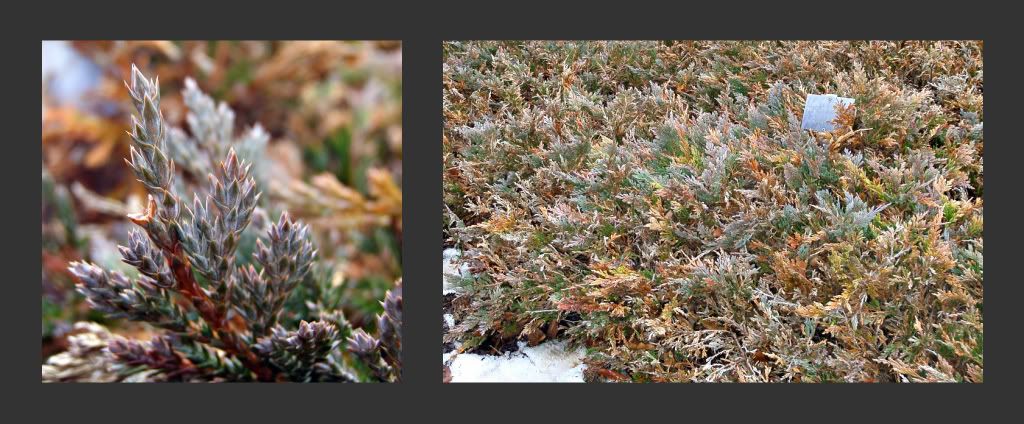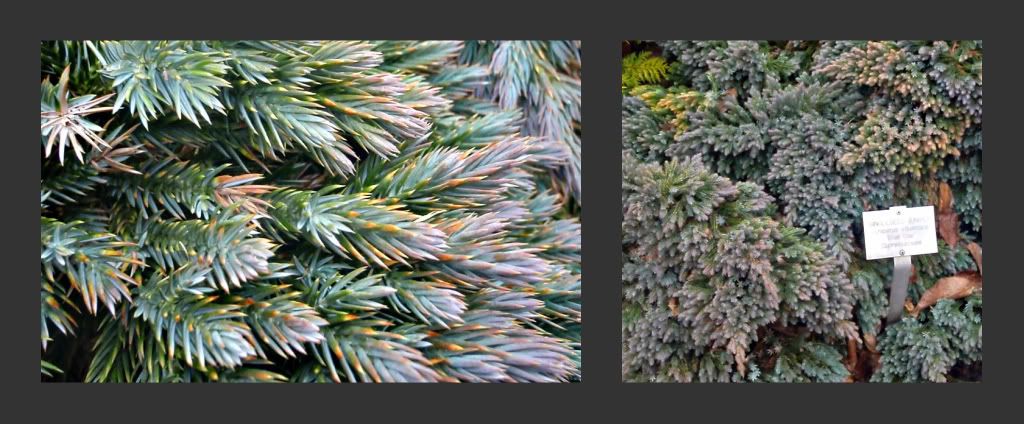I spent all day studying for my Evergreen Ornamentals class with Wayne and it got me thinking about Junipers. These are definately one of the most commonly planted groundcovers, probably in the world as they're native to just about every continent and habit. However, not a ton of thought is usually put into which Junipers are planted.
There's been a big trend lately towards planting native plants and Ontario native plant reccomendation lists are published by various individuals from landscape companies such as Plant World (Toronto) or environmental organizations such as P.O.W.E.R. (Halton). These are both great lists and I would highly reccomend consulting them for any native planting projects.
I'm a big believer in planting using local species, but I've noticed a problem in the push for native plants and that is the belief that using exclusively native plantings is the most environmental solution. If authentic natural restoration is your goal then using only natives is your best bet... however I believe that moderate use of cultivars that are custom suited to site specific conditions (in combonation with native plantings) can have a greater reduction in net environmental impact than using native species alone.
Creeping Juniper (Juniperus horizontalis) 'Blue Chip'
For example: both native plant lists I just mentioned suggested the same few Juniper species: Common Juniper (Juniperus communis), Creeping Juniper (Juniper horizontalis), and Eastern Redcedar (Juniperus virginiana). These are all lovely native Ontario junipers but they are all very succeptible to two common Juniper fungal diseases: Juniper Tip Blight, a common problem on Creeping Juniper is caused by fungus forming on wet foliage in the springtime and Eastern Redcedar is prone to infection by Cedar Apple Rust an orange gooey fungal disease that can also be transmitted to Apple and other fruit trees. These diseases are cosmetically disastrous, can potentially kill the trees and pruning or anti-fungal treatments can be expensive and environmentally detrimental.
Singleseed Juniper (Juniperus squamata) 'Blue Carpet'
The Solution: Selective use of non-native resistant cultivars. Visiting the Niagara School of Horticulture on a field trip last week I came across a lovely Juniper cultivar that is very similar to 'Blue Chip' the most commonly planted cultivar of Creeping Juniper. Its called Singleseed Juniper (Juniperus squamata) 'Blue Carpet' and along with being resistant to Juniper Tip Blight its needles are a lovely bright blue that discolours to a mottled purple in cold weather and it has an attractive ornamental scaly bark on the upper branches. In my opinion it looks less scraggly in winter too, but you decide for yourself!



No comments:
Post a Comment